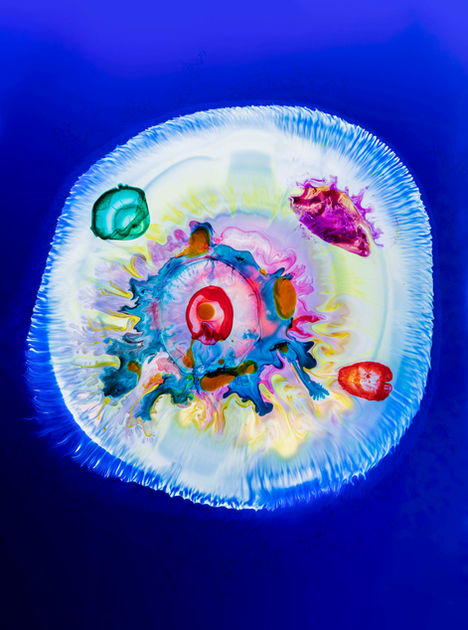CELLS
The series “CELLS” represents the frontier between the organic and the inorganic.
It is a journey through the origin of organisms, and a reminder that there are planes of reality that although we suppose simple, are extremely complex, a look into our interior in the most figurative way possible.
An attempt to silence the interferences that every day try to convince us that happiness is in the noise, a quiet and aesthetic world, but in movement, since the scenes, like life, are in constant expansion. Images that place us in the microscopic plane, with vibrant colors and textures that remind us of cellular structures, and that make us wonder if what we observe is real or not. If it has life, or not.
And in this scenario of false appearances, of stillness and silence, we ask ourselves what life is.
TECHNIQUE
Almost 80% of the cellular material is water.
The physiological processes that occur inside the cell take place thanks to the chemical characteristics of its different parts: polarity, density, pH...
Using different types of fluids Miguel recreates in an artistic way the structure of the cell. Denser liquids to diffuse colors more slowly, less dense liquids to facilitate mixing. Immiscible liquids to give rise to defined structures, and miscible liquids to create more diffuse edges.
He uses dozens of different inks to color the scenes, as each one has different properties and allows him to create different effects. Liquids, like cells, are in motion. Some mix, others crystallize, others expand. So each image is part of a living choreography. What better metaphor for what a cell is.
MEANING
The Oparin-Haldane theory proposes the physicochemical origin of life on earth more than 4 billion years ago.
It is based on the physical and chemical conditions that existed on the early Earth and that allowed the development of life.
According to this theory, certain temperature conditions existed on the primitive Earth, as well as radiation from the Sun that affected the substances that existed in the primitive seas at that time.
These substances combined in such a way that they gave rise to living beings. In 1924 Oparin published "The Origin of Life", a work in which he suggested that when the Earth had just been formed and when the first organisms had not yet appeared, the atmosphere was very different from the present one.
This primitive atmosphere lacked free oxygen, but there were substances such as hydrogen, methane and ammonia. These reacted with each other due to the energy of solar radiation, the electrical activity of the atmosphere and that of volcanoes, giving rise to the first living beings.
In this primitive broth, life arose.
In this primitive broth the CELLS originated.
The CELLS project is a work in which Miguel recreates from art the origin of life and cell behavior.
In his study, as if it were Oparin’s broth, he obtains the conditions that allow the appearance of cells.
With more than 100 different reagents, he simulates cellular structures. And these forms are alive: the liquid images are in motion. They expand, mix, crystallize.
Sometimes chance gives us unique moments like the ones you can see in the videos: if Oparin’s theory explains that the inorganic gave way to the organic, in Miguel’s work, the cells seem to come to life from their reagents.
And as if they were real cells, at some point they disappear, closing the cycle.
























